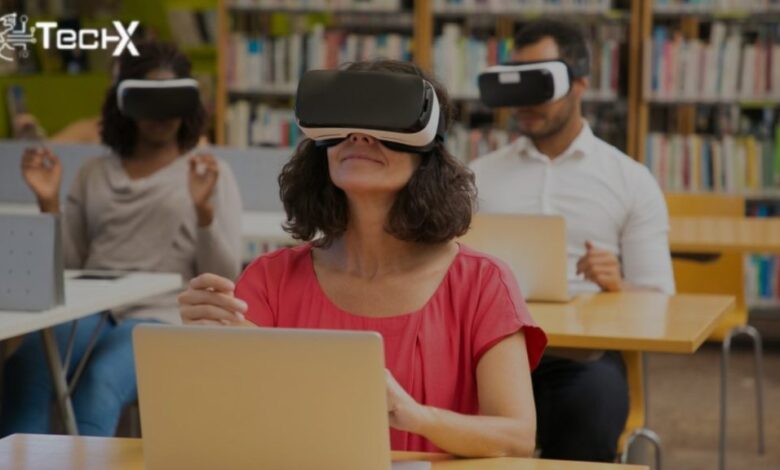Classroom 30x A Modern Approach to Smarter Learning

Education has evolved rapidly over the past few decades, and the rise of digital tools, flexible teaching methods, and interactive platforms has transformed the way students learn. One of the terms making waves in the academic world today is Classroom 30x. This concept represents a modern, technology-enhanced, and collaborative classroom model designed to meet the needs of 21st-century learners.
Classroom 30x is not just about walls, desks, and chairs. It is a vision of learning that integrates technology, personalized instruction, and collaborative strategies to create an engaging environment where students thrive. In this article, we will explore what Classroom 30x means, its benefits, how it works, and why it is becoming an essential model for schools and training institutions worldwide.
What is Classroom 30x
At its core, Classroom 30x is a reimagined classroom setup that leverages technology, flexible seating, interactive boards, and digital learning tools to enhance both teaching and learning. The “30x” often symbolizes scalability—being adaptable to a class of 30 or more students—while still maintaining personalized attention.
Instead of traditional chalk-and-talk teaching, emphasizes:
- Smartboards and digital projectors.
- Student devices such as tablets or laptops.
- Virtual collaboration tools.
- Blended learning approaches that mix physical and digital resources.
- A student-centered learning model.
Key Features of Classroom 30x
To understand why is different from conventional classrooms, let’s look at its defining features:
1. Technology Integration
Interactive whiteboards, projectors, and digital platforms are central to. Teachers can present lessons more dynamically, and students can engage with multimedia resources in real-time.
2. Flexible Seating and Space
Gone are the days of rigid rows of desks. encourages group seating, circular arrangements, and modular furniture to support collaboration and teamwork.
3. Personalized Learning
Teachers in Classroom 30x often use adaptive software to personalize lessons for each student, ensuring that no learner is left behind.
4. Hybrid Learning Opportunities
Whether students are physically in class or attending virtually, supports a hybrid approach. Digital platforms allow seamless communication, assignments, and evaluations.
5. Interactive Assessments
Quizzes, polls, and digital tests allow immediate feedback. This helps both teachers and students understand learning progress more effectively.
Benefits of Classroom 30x
1. Enhances Student Engagement
By using digital tools, keeps students more engaged. Visuals, videos, and interactive lessons make learning fun and relatable.
2. Improves Collaboration
Students can work in groups using digital platforms, fostering peer-to-peer learning and problem-solving.
3. Promotes Digital Literacy
Since the world is becoming increasingly digital, prepares students with the skills they will need in higher education and the workplace.
4. Increases Teacher Efficiency
Teachers can save time by using automated grading tools, digital lesson plans, and interactive content instead of traditional methods.
5. Encourages Independent Learning
With access to e-libraries and online resources, students can take ownership of their learning journey.
How Classroom 30x Works in Practice
To visualize, imagine walking into a classroom where:
- Each student has access to a tablet or laptop.
- The teacher projects lessons onto an interactive board.
- Students collaborate on assignments in real-time using apps like Google Classroom or Microsoft Teams.
- Desks can be rearranged quickly for group activities.
- A mix of online and offline resources keeps learning flexible.
This setup ensures that students are active participants rather than passive listeners.
The Role of Teachers in Classroom 30x
Contrary to popular belief, does not replace teachers—it empowers them. Teachers act as facilitators, guiding students through inquiry-based learning and encouraging critical thinking. They can track progress through analytics tools and tailor lessons to suit individual needs.
Challenges of Classroom 30x
While the model is promising, there are some challenges to consider:
- Cost of technology: Not all schools can afford devices and smartboards.
- Digital divide: Students without reliable internet access may struggle.
- Teacher training: Educators need proper training to adapt to new tools.
- Distraction risk: Devices can sometimes lead to off-task behavior.
Despite these challenges, with proper planning, can revolutionize education.
Future of Classroom 30x
As artificial intelligence, virtual reality, and augmented reality advance, Classroom 30x is expected to evolve even further. Imagine students taking virtual field trips, conducting science experiments in simulated labs, or collaborating with peers across the globe—all within the classroom environment.
This futuristic vision makes more than just a trend—it is a foundation for the future of education.
FAQs
1. What makes different from a traditional classroom
focuses on interactive learning, technology integration, and flexible teaching methods, unlike traditional lecture-based models.
2. Does Classroom 30x require expensive equipment
Not necessarily. While advanced tools enhance the experience, even low-cost digital platforms and basic devices can support a model.
3. Can Classroom 30x be applied outside schools
Yes. It is widely used in corporate training, workshops, and online courses to promote interactive and effective learning.
4. How does Classroom 30x support personalized learning
Teachers use digital tools to track progress and adapt lessons based on each student’s strengths and weaknesses.
5. Is Classroom 30x suitable for all subjects
Absolutely. Whether it’s science, mathematics, history, or arts, can be adapted to suit any subject with creative teaching strategies.
6. What skills do students gain from Classroom 30x
Apart from academic knowledge, students develop digital literacy, problem-solving, teamwork, and self-learning skills.
Conclusion
Classroom 30x represents a major shift in how education is delivered. It bridges the gap between traditional teaching and the digital age by creating a space where learning is engaging, interactive, and future-ready. Though it comes with challenges like cost and training, its benefits far outweigh the limitations



